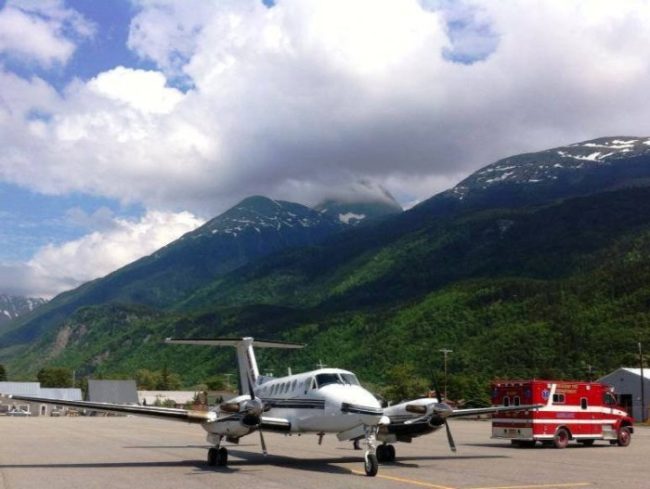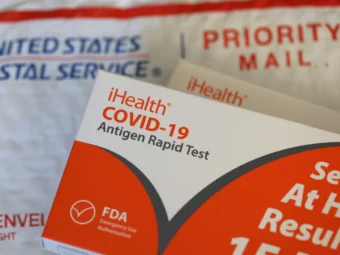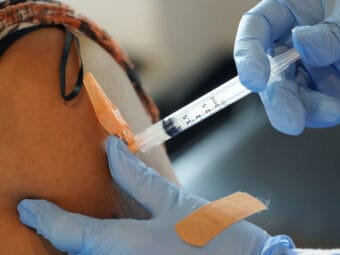
Larry Geise’s medevac flight from Haines to the emergency room at Providence Alaska Medical Center in Anchorage took only two and a half hours, but once he was there, it took two days to get a bed.
He said there were no beds available and he got moved around in the emergency room a few times before landing in a room.
When patients wait in the emergency room until an inpatient bed opens up it is called “boarding,” and state officials say it’s happening more often as the health system sags under the weight of COVID-19 cases. Geise says they didn’t have to explain boarding to him. It was clear what was going on.
His wife Linda described the scene.
“As I went up into the lobby area, there was probably 50 more people standing to get into the emergency room,” she said. “And then going outside, there was more people in the parking lot, waiting to get up to the main entry to go to the emergency room.”
Medical staff stabilized Geise in the ER—he didn’t have the heart attack doctors feared. He recovered upstairs.
Increased wait times and emergency room boarding are just some of the things that happen when hospitals are full. Right now it’s also harder to transfer patients from rural Alaska communities, which is a crucial part of the state’s medical system.
For remote communities, those transfers are usually medevacs — chartered flights staffed by medics. In Haines, population 2,500, where the Geises are from, officials at the clinic estimate they medevac about eight patients a month, but it can be up to 20.
Guardian Flight is one of the main medevac companies in the state. Doug Williams, who oversees regional operations for the company, said usually when the crew gets a call with the location of the patient and their destination, they get going. Now, they have to wait while they figure out where they are going to go.
“And it just may add a little bit of additional time to coordinate where the right place to go is,” he said.
That wait time puts a strain on local clinics. In addition, rural clinics are holding onto sicker patients that they would typically send out, according to Jared Kosin who represents the Alaska State Hospital and Nursing Home Association.
“If the delta variant starts hitting our rural hospitals really hard, that’s going to produce a lot more complex patients that probably need to be transferred in to a higher level care setting,” he said. “And if that happens right now, finding that room and availability is really challenging.”
Top state health officials say Alaska’s case count numbers are going in the wrong direction — an indicator of increased hospitalizations to come.
Kosin says if rural facilities are hit harder, it could take the pandemic to the next level.
This story has been updated with additional details about Larry Geise’s care.



